10 wonderful cultural sites in Iran you must see

Iran, one of the friendliest countries on Earth, was once the heart of the mighty Persian Empire which almost stretched from Greece all the way to China. And now, what we know as modern Iran is the inheritor of a land full of sites of high cultural values from corner to corner.
Iran is also a jewel in Islam’s crown, mingling glorious architecture, fascinating feats of engineering with a warm-hearted welcome from the locals. The Islamic architecture displays a mastery over geometry and design. It is not only a highlight of Iran’s cultural heritage but of humanity’s.
Even if you don’t plan to visit, you can still marvel at these 10 amazing cultural sites in Iran. Grasp the opportunity to learn more about the ancient land than just what we see on the news!
1. Imam Reza Shrine, Mashhad
One of the holiest sites in Iran, the shrine complex houses the tomb of Imam Reza (AS), the eighth Shia Imam, as well as many other important spiritual figures. Also here are a series of mosques, a madrasa, and a museum containing priceless historical artifacts.
The shrine is enveloped in a vast series of sacred precincts collectively known as the Haram-e Razavi, or Haram for short. This magical city-within-a-city sprouts dazzling clusters of domes and minarets in blue and pure gold behind fountain-cooled courtyards and magnificent arched arcades. It’s one of the marvels of the Islamic world, well worth savoring its moods and glories more than once by visiting at different times of the day.
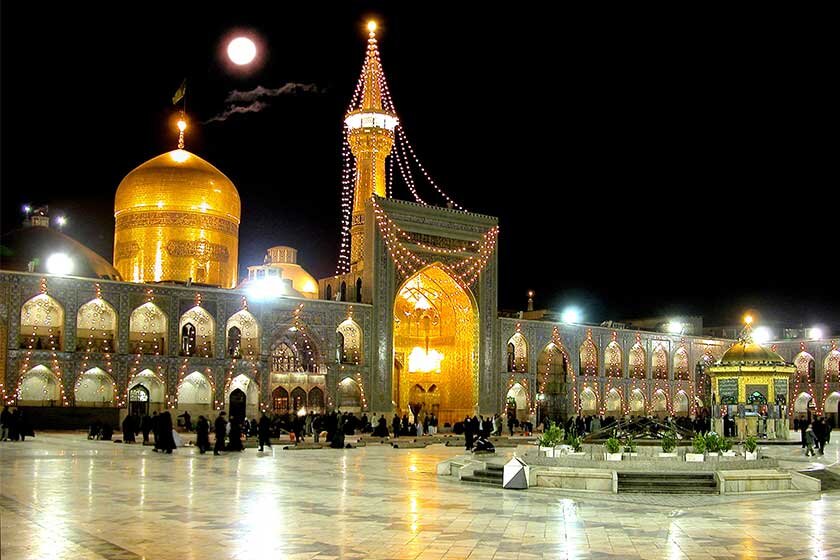
In August 2020, the pilgrimage to the shrine complex of Imam Reza (AS) was inscribed on the National Intangible Cultural Heritage under the number 2015 upon a proposal offered by the tourism department of Khorasan Razavi province.
2. Persepolis, Shiraz
Situated to the northeast of Shiraz is the ancient capital of the Achaemenid Empire. Persepolis (“the city of Persians” in Greek) would have been known as Parsa to the ancient Persians and is one of the most prominent cultural sites in Iran.
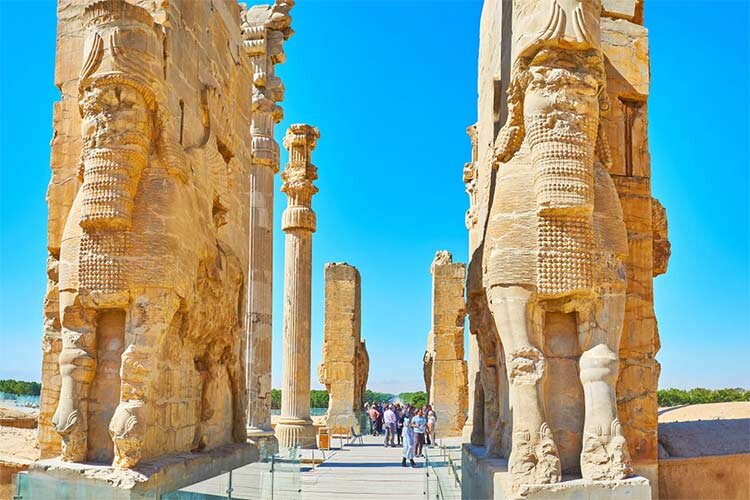
Persepolis was the seat of the government of the Achaemenid Empire, though it was designed primarily to be a showplace and spectacular center for the receptions and festivals of the kings and their empire. It ranks among the archaeological sites which have no equivalent, considering its unique architecture, urban planning, construction technology, and art.
The ceremonial capital of the Achaemenid Empire was (according to narratives) burnt by Alexander the Great in 330 BC apparently as a revenge to the Persians because it seems the Persian King Xerxes had burnt the Greek City of Athens around 150 years earlier.
The city’s immense terrace was begun about 518 BC by Darius the Great, the Achaemenid Empire’s king. On this terrace, successive kings erected a series of architecturally stunning palatial buildings, among them the massive Apadana palace and the Throne Hall (“Hundred-Column Hall”).
3. Tomb of Daniel, Susa
The traditional burial place of the Biblical prophet Daniel, this tomb is known for its distinctive pine-cone-shaped dome. It earliest mentioned comes from Benjamin of Tudela who visited the area in the 12th century and it still remains a popular pilgrimage site. The traditional burial place of the Biblical prophet Daniel, which is located in the town Shush (Susa), is known for its distinctive conical dome.
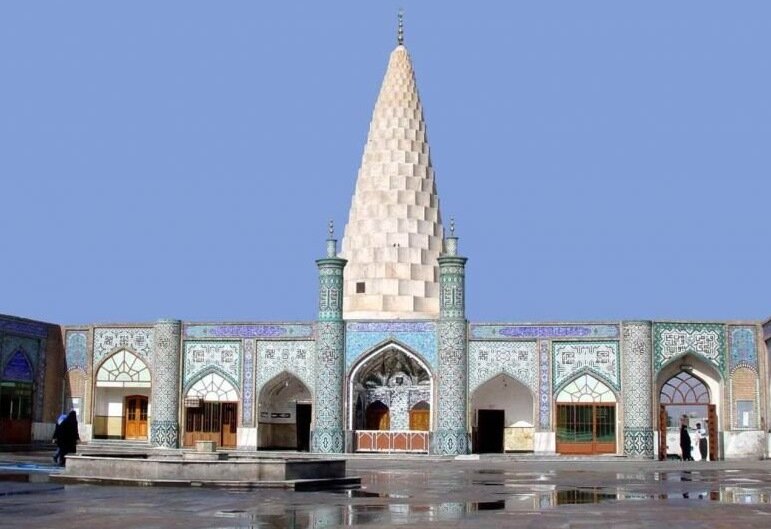
The mausoleum cannot be missed while traversing southwest Iran, though its architecture is of no great antiquity. It contains two courtyards, each encircled by adjoining chambers and porches. The pilgrimage also offers some accommodations to visitors willing for an overnight stay.
4. Imam Mosque, Isfahan
At the southern end of Isfahan’s Naghsh-e Jahan Sq., the second biggest in the world after Tiananmen Sq. in China stands the big, grand and impressive Imam Mosque (formerly known as the Shah Mosque or the Royal Mosque), which is not only impressive because of its sheer size and incredible decorations but also helps to get a good impression of the needs and challenges of always on-going restoration works.
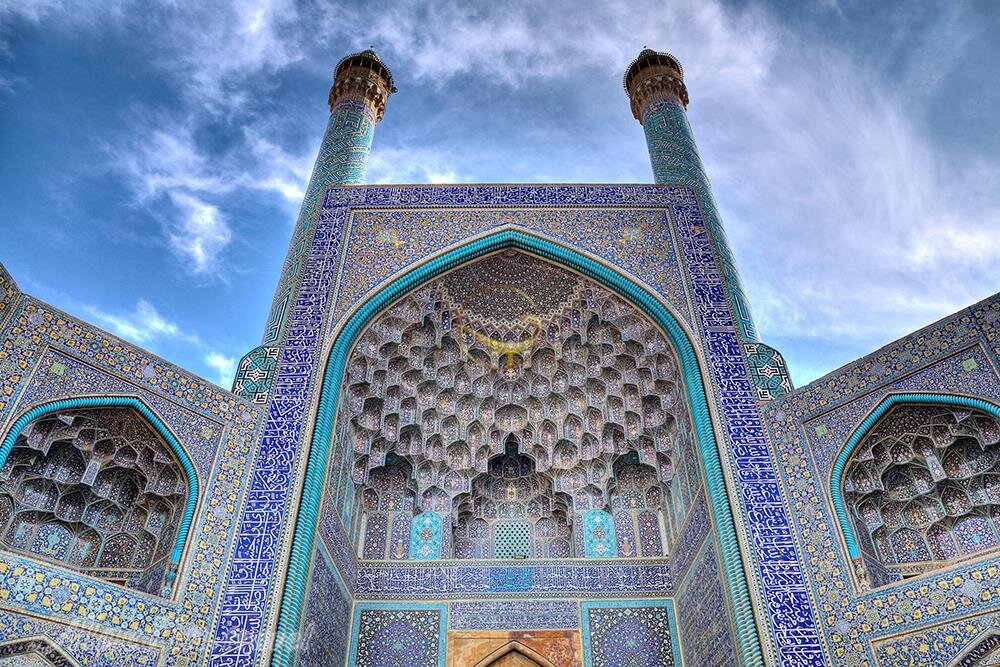
Also known as the Royal Mosque, or the Imam Mosque, this is one of the most recognizable sights which its beauty comes from its seven-color mosaic tiles and calligraphic inscriptions. The Shah Mosque is one of the masterpieces of Islamic architecture in Iran.
Visitors could easily be stunned by the awesome views of the main dome and its glorious profusion of turquoise-shaded tiles, iconic blue-tiled mosaics covering everywhere.
5. Golestan Palace, Tehran
The Golestan Palace was the former royal residents of the Qajar monarchs during the 19th century. It is filled with gardens and various royal buildings that were once contained within the “arg” or fortified walls of the “Old Tehran”.
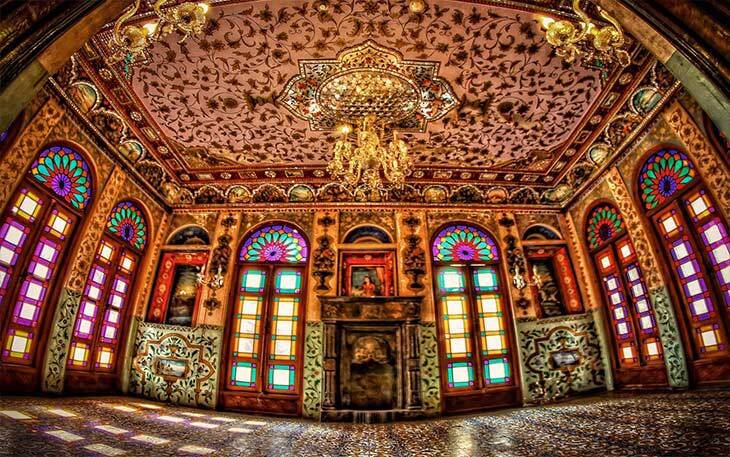
The UNESCO World Heritage site was also a center for Qajari arts and architecture; successful integration of earlier Persian crafts and architecture with Western influences. It is now an exemplar source of inspiration for Iranian artists and architects.
6. Shah Cheragh, Shiraz
Being a pilgrimage site since the 14th century, Shah Cheragh (literally meaning the “King of Light”) may look like an unsuspecting monument from the outside. But its glittering interior, where glass tiles bounce the light in every direction, welcomes visitors to a new world of architecture. Inside is home to intricate geometric designs that create a stunning otherworldly light show.
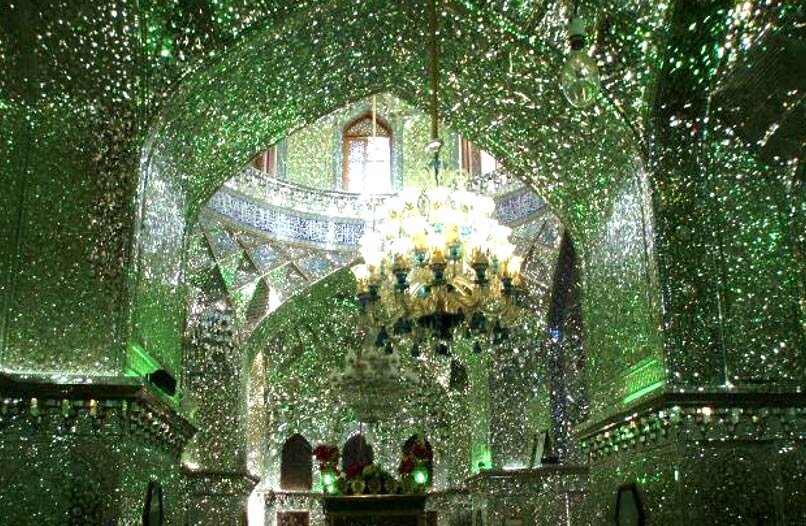
There is also a modest museum in the northwestern corner of the courtyard, next to the shrine, which showcases shrine-related objects, including some highly prized old Qurans and an exquisite door embellished with silver and gold.
7. Tower and Fort of Bam, Kerman
The ancient landscape of Bam and its adobe citadel is a UNESCO World Heritage Site located in the Kerman province. Dating back 2,000 years to the Parthian Empire, the citadel, locally called the Arg-e Bam, is reportedly the largest adobe building in the world. While it was abandoned after the Afghan invasions of 1722, the city is slowly being inhabited once more.
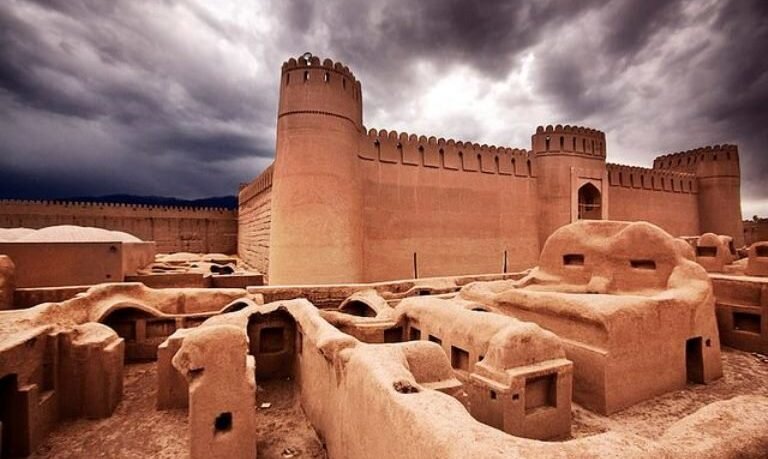
The fortress was almost completely brought down to earth due to a devastating earthquake on December 26, 2003. Most of what visitors now see at the site is restored and replicas of the original structure being restored from 2004 onwards.
8. Khaju Bridge, Isfahan
To experience Isfahan, it is more magical to walk across Pol-e Khaju (Khaju Bridge) at sunset when the 17th-century bridge is lit by glorious colors.
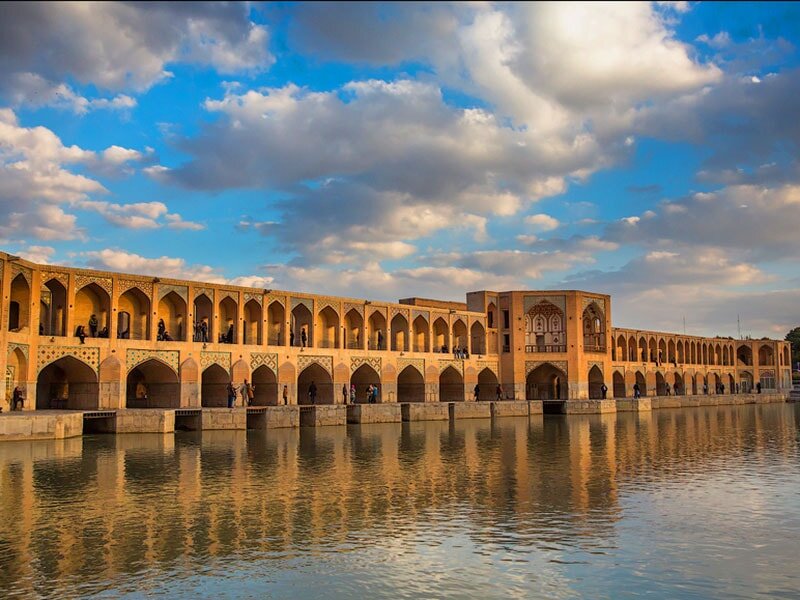
Brick arches, decorative motifs and tiles, adjoining arcades, and an octagonal pavilion embedded right in the middle are amongst the main features of the picturesque bridge that spans Zayandeh-Rood, one of the largest rivers in the central Iranian Plateau.
In its heyday, the central passageway on the upper level of the bridge was utilized by horse-riders and carts while the vaulted paths on either side were dedicated to pedestrians.
9. Fin Garden, Kashan
The richly manicured yet historical Fin Garden (“Bagh-e Fin”) is situated on the margins of the central Iranian desert in Kashan.
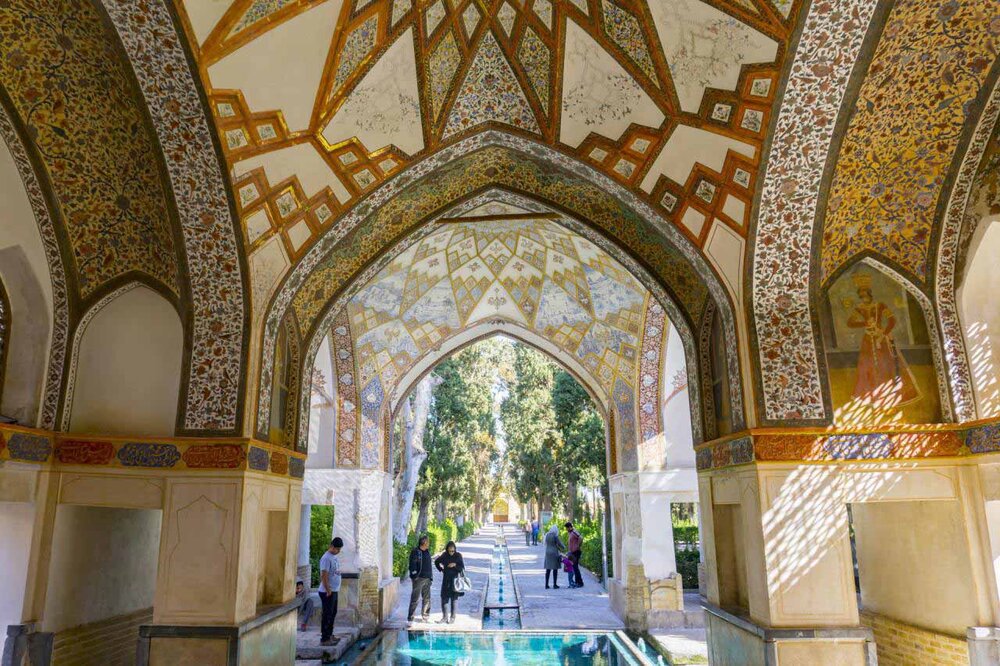
The history of Bagh-e Fin in its current shape dates back to the time of Shah Abbas I who was the 5th Safavid king of Iran and reigned from 1588 to 1629. However, some sources say the original premises date far back in time.
The property together with eight others across the country have been inscribed on the UNESCO World Heritage list under the title of “The Persian Garden”, which its genuine concept interweaves natural elements with manmade components to embody an idea of creating a paradise on Earth by the means of artistic, philosophical, figurative, and religious notions.
10. Historical Bazaar, Tabriz
The historical bazaar complex, a labyrinth of interconnected covered passages that adds up to about 5 km, has been a melting pot of cultural exchange since antiquity and once a hot spot on the ancient Silk Road.
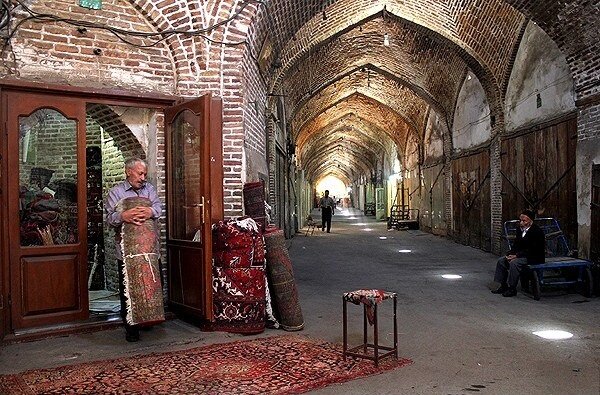
The bazaar, which has been inscribed on the UNESCO World Heritage list, embraces countless shops, over 20 caravanserais, and inns, some 20 vast domed halls, bathhouses, and mosques, as well as other brick structures and enclosed spaces for different functions. Most mazes and passages offer certain commodities such as carpets, metalwork, toys, clothing, jewelry, and kitchen appliances, traditional spices, herbal remedies, and natural perfumes.
The history of the Tabriz bazaar dates back to over a millennium ago, however the majority of fine brick vaults that capture most visitor’s eyes date from the 15th century.
AFM/MG
